OSRAM Transformer for halogen metal halide
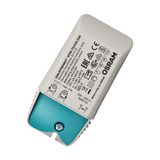
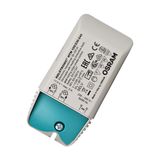
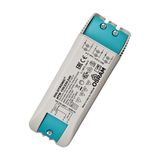
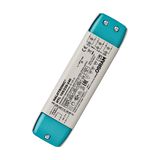
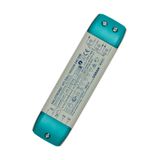
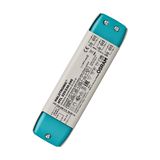
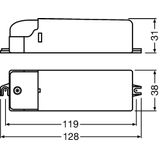
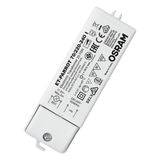
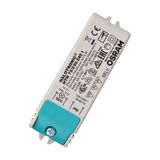
OSRAM Transformers and Ballast Units for Halogen & Metal-Halide
OSRAM power gear covers two different worlds that often get mixed up in specs: low-voltage halogen transformers and HID (metal-halide) control gear. One converts mains to 12 V for halogen; the other limits current and provides ignition for discharge lamps. Selecting the right OSRAM unit prevents nuisance trips, lamp flicker, and premature failures in luminaires and p
OSRAM Halogen Transformers — electronic vs magnetic
Use-case: 12 V halogen (MR16, AR111, capsule) in shop fits, display cases, accent lighting, cabinet lighting.
Types you’ll see in BOMs:
- Electronic transformers (ET): compact, light, high-frequency output (~30–50 kHz). Typical load windows 20–60 W, 35–105 W, 50–150 W.
- Magnetic/torodial (conventional) transformers: 50/60 Hz iron core, heavier, tolerant of long cable runs and odd loads.
Parameters that matter (halogen):
- Input: 220–240 V AC, 50/60 Hz (site voltage tolerance ±10 %).
- Output: 11.5–12 V AC (RMS).
- Load window: respect min and max; electronic units will not start below the minimum wattage.
- Dimming: check compatibility:
- Leading-edge (TRIAC/phase-cut) — many ETs support it.
- Trailing-edge (ELV) — cleaner with less buzz; confirm on datasheet.
- 1–10 V / DALI — only on specific drivers; halogen rarely uses these.
- Wiring length: electronic units have short permissible 12 V leads (typically ≤2 m) to avoid capacitive effects; magnetic allows longer runs
- Thermals: ta (ambient) and tc (case) limits; keep airflow—don’t bury the unit under insulation.
- Protection: short-circuit/overload/over-temp auto-reset on ETs; fusing on magnetic.
When to choose which:
- Electronic — tight spaces, weight sensitive, many small 12 V heads on short leads, phase-cut dimming expected
- Magnetic — long cable runs, mixed load types, harsh EMI, or legacy dimmers that misbehave with electronic gear.
Typical halogen mistakes:
- Running one 35 W lamp on a 35–105 W ET → below-min-load flicker/no-start.
- Trailing-edge dimmer on an ET not rated for it → strobing, transformer stress
OSRAM Metal-Halide Control Gear — ballasts, ignitors, electronic gear
Use-case: HQI/HCI/MH lamps in halls, façades, high-bays, floodlights.
Topologies:
- Electromagnetic ballast (choke) + ignitor + capacitor: classic HID set.
- Ignitor variants: superimposed (parallel), series, semi-parallel — match to lamp/luminaire wiring.
- PF correction: add capacitor in control box; target PF ≥0.9 for large banks.
- Electronic control gear (ECG) for HID: drives lamp at controlled frequency, warm-start/End-of-Life protection, often higher efficacy and better colour stability.
Parameters that matter (metal-halide):
- Lamp wattage & voltage class: eg. 70/150/250/400 W; lamp arc voltage defines ballast current.
- Ignition pulse: kV window must meet lamp spec (cold and hot re-strike).
- Lead length/capacitance limits between ignitor and lamp (especially superimposed types).
- Thermals: ta/tc on gear tray; enclosed canopies can exceed ta quickly.
- Mains: 50/60 Hz taps and ±10 % tolerance; voltage sag during warm-up is a common nuisance.
- EMC/safety: gear should meet IEC 61347 family; luminaire per IEC 60598; lamps IEC 62035.
When to choose which:
- EM ballast + ignitor — simple, robust, cost-effective, easy field service, widely compatible.
- Electronic HID gear — tighter current control, faster stabilisation, lower flicker, better lamp life in premium installations.
Typical HID mistakes:
- Mismatching lamp and choke wattages → over-current and blackened tubes.
- Using series ignitor in a luminaire wired for superimposed → no-start.
- Exceeding max ignitor-to-lamp cable length → random misfires
- Skipping PF capacitors on big cabinets → penalties and nuisance breaker trips.
OSRAM Lighting Transformers vs OSRAM Ballast Units — quick decision table
Task | Use OSRAM Halogen Transformer | Use OSRAM HID Ballast/ECG |
| Powering 12 V MR16/AR111 | ✔ | – |
| Dimming with phase-cut wall dimmers | ✔ (check dimmer type) | – |
| Driving metal-halide (HQI/HCI/MH) | – | ✔ (+ ignitor) |
| Long secondary cable runs | Magnetic transformer | EM ballast (check ignitor leads) |
| Tight thermal space, light weight | Electronic transformer | Electronic HID gear (if lamp allows) |
OSRAM Mounting, Wiring, and Protection Notes
- Class I vs Class II gear: confirm earth continuity; some ETs are double-insulated (Class II) — wiring differs.
- Ingress / location: IP20 in dry ceiling voids; IP54/65 only if specified. Keep out of insulation voids unless gear is “IC” rated.
- Fixation: firm mounting to metal tray or luminaire backplate for heat sinking; maintain clearance around tc point.
- Separation of circuits: route 12 V halogen leads away from mains where possible; for HID keep ignitor leads short and shielded if specified.
- Service labeling: mark lamp wattage, ballast code, ignitor type, capacitor value inside the luminaire or on the gear tray.
OSRAM Practical Comparisons
OSRAM Electronic Halogen Transformer vs Magnetic
- Size/weight: electronic is compact/light; magnetic is bulky/heavy.
- Compatibility: magnetic tolerates odd loads/long runs; electronic needs min load and short leads.
- Acoustics/EMI: electronic can buzz less but is EMI-sensitive; magnetic hums but shrugs off EM
- Efficiency: electronic typically higher at partial loads
OSRAM EM HID Gear vs OSRAM Electronic HID Gear
- Start/colour stability: ECG better; EM is adequate where cost rules.
- Maintenance: EM is field-serviceable with discrete parts; ECG is a single module swap.
- Controls: ECG can offer better dim or control options (model-dependent).
OSRAM Buyer Checklist (prevents callbacks)
- Define the lamp first
- 12 V halogen → transformer (check min/max load, dimming, cable length).
- MHHQI/HCI → ballast + ignitor (or ECG), PF capacitor as per sheet.
- 12 V halogen → transformer (check min/max load, dimming, cable length).
- Match ratings: mains, wattage, thermal class (ta/tc), IP.
- Confirm dimming method: leading/trailing-edge for halogen; HID dimming only on compatible ECGs
- Cable routing: respect lead-length limits; use suitable gauge and ferrules.
- Documentation pack: datasheet, wiring diagram, conformity (IEC 61347/60598/62035/EMC).
- Stock plan: unify families across sites to simplify spares and maintenance.
Common engineer errors: mixing “transformer” terminology into HID specs; ignoring min-load on ETs; using office dimmers on electronic transformers; overlooking ignitor topology on retrofits.
OSRAM Compatibility and Integration
OSRAM gear plays well with standard luminaires and panels: terminal sizes match common block types; mounting hole patterns suit gear trays; phase-cut dimmer lists are usually provided for ETs; HID gear pairing tables define ballast/ignitor/capacitor sets. In mixed-brand systems, verify lamp current and ignition windows, plus any EMC notes for long conduit runs
Why source OSRAM transformers and ballasts from Bank of Lamps
- EU warehouse (Latvia): popular ET load windows and HID wattages held for fast dispatch.
- Audit-ready files: conformity + wiring diagrams packaged for tender folders.
- Cross-reference help: we map your lamp lists (MR16/MH) to exact OSRAM gear (ET load window, ballast/ignitor pair, capacitor µF).
- Consolidated B2B supply: lamps + gear + brackets + glands in one PO to reduce freight/admin.